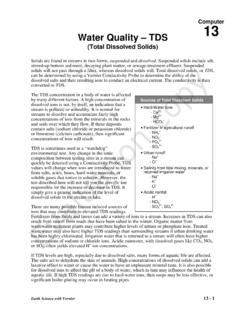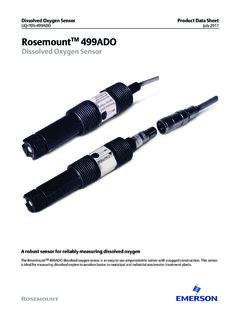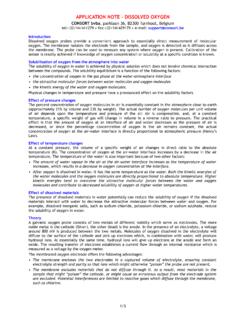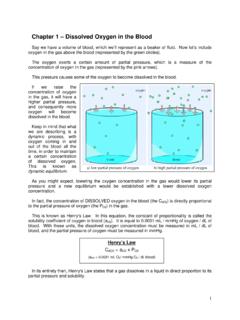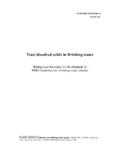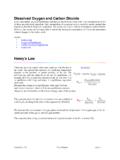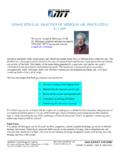Transcription of Maximum Dissolved Oxygen Concentration …
1 Maximum Dissolved Oxygen Concentration Saturation Table The Concentration of Dissolved Oxygen (DO) in water is influenced by a number of factors, including water temperature, salinity and atmospheric pressure. The relationship between water temperature and DO is inverse: Cold water is able to hold more DO and warm water. The following table is based on zero salinity (for lakes), and 760 millimeters of mercury (1 Standard Atmosphere). Actual atmospheric pressure can be compensated for when calibrating Dissolved Oxygen meters by entering feet above sea level, or in some meters, an internal barometer compensates for changes in pressure automatically provided that the barometer is properly calibrated. Dissolved Oxygen values shown in the table represent saturation for the corresponding temperature. This value is generally used during DO meter calibration, based on the assumption that saturated conditions exist in the calibration chamber, there are no air bubbles under the membrane and that no water droplets are present on the actual probe.
2 Older analog meters require the user to manually adjust the DO value according to the temperature; newer meters perform a self calibration at the touch of a button and this chart is used to verify the accuracy of the calibration. If a DO value is off by more than =/ ppm, check the probe for air bubbles or water droplets, blow off droplets and/or replace the membrane, replace the calibration chamber, wait 15 20 minutes for the air within the chamber to be saturated with water vapor, then recalibrate. Values on the chart are also used to double check the surface DO reading. Most surface DO readings are within ppm of saturation, except under bloom conditions, when the lake is highly colored, or when the atmospheric pressure is changing rapidly. If surface readings DO are off by more than ppm, recalibration is often necessary.
3 If surface readings are off by more than ppm, there is most likely some problem with the probe or meter.
